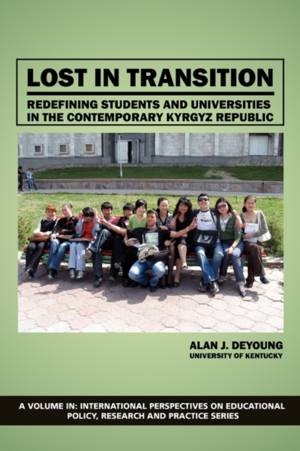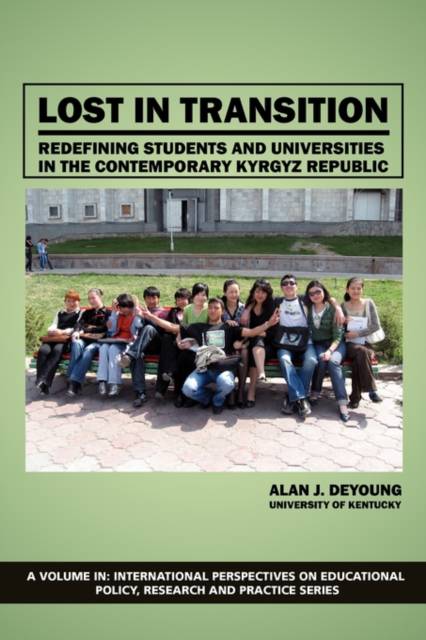
- Retrait gratuit dans votre magasin Club
- 7.000.000 titres dans notre catalogue
- Payer en toute sécurité
- Toujours un magasin près de chez vous
- Retrait gratuit dans votre magasin Club
- 7.000.0000 titres dans notre catalogue
- Payer en toute sécurité
- Toujours un magasin près de chez vous
Lost in Transition
Redefining Students and Universities in the Contemporary Kyrgyz Republic
Alan J DeYoungDescription
Being a "student" has been and remains a highly desirable status for young people and their families in Kyrgyzstan. "Giving their children education" (dat detyam obrazovaniye) - meaning "higher education" - has become an imperative for many parents, even in a time of serious economic and social decline. The numbers of universities and university enrollments have increased dramatically - in fact quadrupled - since Kyrgyz independence from the former USSR in 1991. All this is happening just as the overall system of secondary education has basically collapsed. School quality and outcomes of learning for most Kyrgyz youth have become increasingly marginal - even as those who run universities widely proclaim quality improvements and desires/intentions to join international higher education space. The book thus seeks to explain the manifest versus the latent functions of higher education in Kyrgyzstan. Relying on explanations of lived experience, the research attempts to explain how the seeming contradiction of a declining resource and intellectual base of universities yet appeals to parents and students as the system continues to expand with easily compromised accountability measures. The study approaches these topics by seeking to define what it now means to be a university student in Kyrgyzstan, as well as what many state universities have turned into" in contrast in contrast to how they were remembered by those who attended and taught within them two decades ago. The work also considers a number of private and inter-governmental universities which are allowed to operate in Kyrgyzstan and award both state and international diplomas. I portray the different organizational and ideological pursuits of these universities as they contrast with those of the state universities.
Lost in Transition is an empirical look at higher education reform in Kyrgyzstan, employing several methodological strategies. These include a student survey given to over 200 students at five different universities; surveys and interviews with senior instructors and administrators at these same institutions; and a two-year case study of a student and faculty cultures and subcultures at one particular national university particular university faculty in one of the larger state universities. The case study utilized participant observation, ethnographic interviews, document analysis, and social media.
Spécifications
Parties prenantes
- Auteur(s) :
- Editeur:
Contenu
- Nombre de pages :
- 186
- Langue:
- Anglais
- Collection :
Caractéristiques
- EAN:
- 9781617352300
- Date de parution :
- 27-01-11
- Format:
- Livre broché
- Format numérique:
- Trade paperback (VS)
- Dimensions :
- 156 mm x 234 mm
- Poids :
- 267 g

Les avis
Nous publions uniquement les avis qui respectent les conditions requises. Consultez nos conditions pour les avis.






